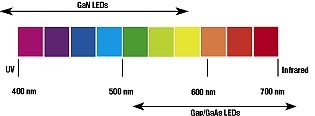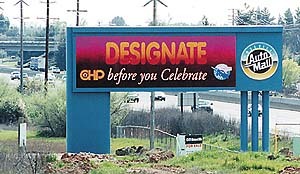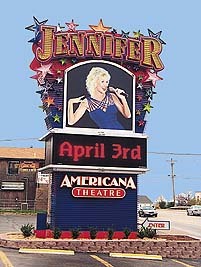In late April and early May, moving-message signs sprouted like spring flowers in Orlando and New York. At the ISA Sign Expo 2000, full-color video boards dominated the Orange County Convention Center as never before, covering almost the entire perimeter of the exhibit hall. In this scintillating environment, South Korean manufacturers Daehan Ultravision and Samik Electronics (both of Seoul) grabbed attention, exhibiting huge, full-color LED video displays with riveting picture quality.
Unfortunately, the excruciating brightness of these boards foiled my attempts to shoot acceptable photos. But we did count at least 35 electronic-sign exhibitors, setting a new record for the sign industry’s big event.
One week after Orlando’s extravaganza, we visited the Big Apple for Lightfair Intl. 2000, the lighting industry’s largest show. Because our hotel was located near Times Square, Publisher Wade Swormstedt and I got a double dose of moving-message megalomania as we strolled through Manhattan’s digital wonderland.
The remarkable brightness of today’s full-color LED displays underscores significant advances in optoelectronics during the past five years. LED signs that, as late as the mid-’90s, were considered too dim or troublesome for outdoor use, now blast through direct sunlight, dominating the electronic-sign world. Improvements in LED technology also have convinced major light-bulb manufacturers that LED lighting will represent an important segment of their future markets.
Gallium nitride rules
For most of their short history, LEDs emitted only infrared, red or yellow wavelengths. The light-emitting, semiconductor dies in first-generation LEDs were based on gallium phosphide (GaP) and gallium arsenide (GaAs), and their color range was limited (Fig 1). In 1996, however, the first high-brightness, gallium-nitride (GaN) LEDs were introduced commercially — first in blue, then in green wavelengths. Today, high-efficiency GaN LEDs cover a substantial portion of the visible spectrum. LED researchers hope to eventually produce GaN diodes that comprise red wavelengths, thus covering the entire spectrum.
The color limitations of GaP and GaAs diodes also make these LEDs unsuitable for lighting applications. These diodes cannot produce the shorter wavelengths required to excite phosphors for down-conversion to white light. In fluorescent, neon and HID lamps, for example, phosphor coatings produce white light by interacting with light sources that emit in the blue-to-UV range. The advent of GaN LEDs surpassed this roadblock, enabling LEDs to compete with conventional sources of white light.
Some major players are boosting this new generation of LEDs for conventional lighting applications. In April, Cree Inc. (Durham, NC) announced its acquisition of Nitres Inc., a leading R&D firm for high-brightness, nitride-based LEDs. Nitres has now become a wholly owned subsidiary known as Cree Lighting Co. Before this acquisition was announced, Nitres began a joint R&D venture with GE Lighting Co. (Cleveland) to develop a solid-state, white fluorescent lamp. This venture is partially funded by the U.S. Commerce Department.
Collaborating with Agilent Technologies, a division of Hewlett-Packard Co. (San Jose, CA), Philips Lighting (Somerset, NJ) has invested more than $150 million to create LumiLeds Lighting (Elk Grove Village, IL). This entity will develop and market solid-state lighting products for various applications, including electric signs.
The brightness boost provided by GaN LEDs is quite evident in New York’s Times Square, where the newest and most spectacular LED displays use this technology. The grainy appearances associated with older LED or incandescent, full-color displays have largely been eliminated in this new generation of products.
Messages across North America
California sunshine is no match for the new full-color LED billboard manufactured by Ad-Art Electronic Sign Corp. (Stockton, CA) for the Roseville Auto Mall, Roseville, CA (Fig. 2). Each side of the double-faced sign comprises 7 x 22 LED modules that create a 112 x 352-pixel matrix measuring approximately 9 x 29 ft. In addition to displaying ads for various automotive products sold at the facility, the board runs paid public service announcements and other out-of-home advertisements that generate revenue for the owner.
During rush hour, Montreal motorists get sales pitches from the recently installed 20 x 40-ft. pseudocolor, incandescent message board manufactured by Daktronics Inc. (Brookings, SD) and installed by Claude Neon Ltd., Dorval, Quebec . The king-sized display was built for Lumipub Inc. (Montreal), an advertising agency specializing in electronic-media management.Daktronics Inc.
"Jennifer" is a popular name at ST Publications, and even more popular in the town of Branson, MO’s "Little Nashville." Installed as a key element in the new freestanding sign at the Jennifer Americana Theatre (Fig. 3), the 4 x 12-ft. Galaxy


 Photo Gallery2 weeks ago
Photo Gallery2 weeks ago
 Paula Fargo2 weeks ago
Paula Fargo2 weeks ago
 Real Deal1 week ago
Real Deal1 week ago
 Photo Gallery2 weeks ago
Photo Gallery2 weeks ago
 Projects1 week ago
Projects1 week ago
 Women in Signs2 weeks ago
Women in Signs2 weeks ago
 Signs of the Times2 weeks ago
Signs of the Times2 weeks ago
 Business Management7 days ago
Business Management7 days ago


















